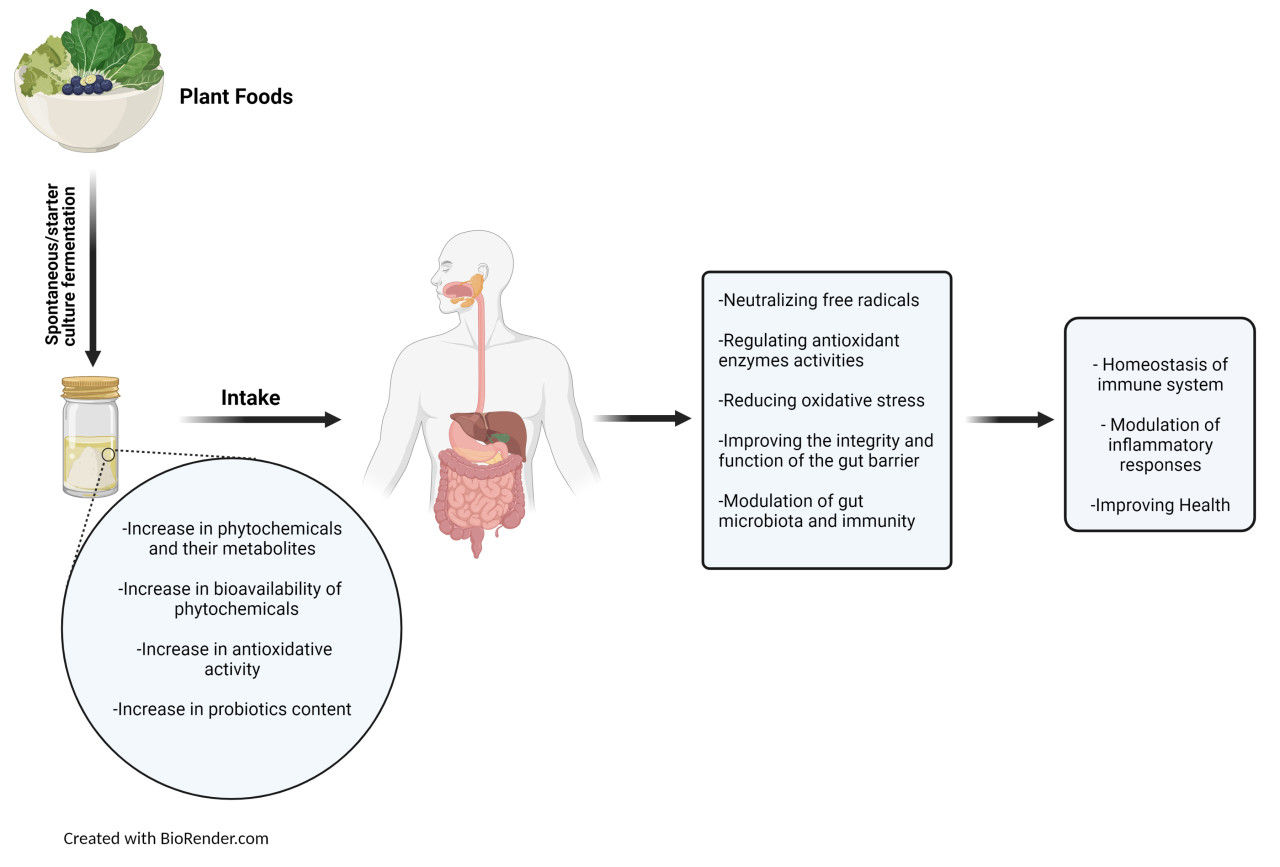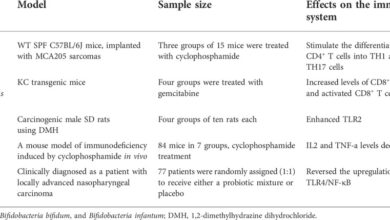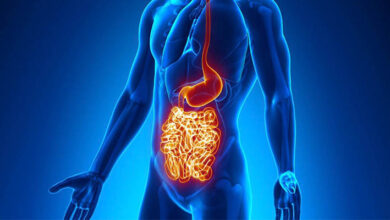
Can eating fermented foods help curb inflammation? This exploration dives into the fascinating world of fermented foods, examining their potential to impact inflammation in the body. We’ll uncover the science behind fermentation, explore the different types of inflammation, and investigate how these foods might influence inflammatory pathways. Prepare to discover if adding fermented foods to your diet could be a powerful tool for your overall health.
From the tangy tang of kimchi to the creamy smoothness of yogurt, fermented foods offer a diverse range of flavors and potential health benefits. We’ll delve into the process of fermentation, highlighting the role of beneficial microorganisms. A comparison of nutritional profiles between fermented and non-fermented foods will illustrate the potential advantages of incorporating these foods into a balanced diet.
This will help us understand the science behind how fermented foods work and the nutrients they provide.
Introduction to Fermented Foods

Fermented foods are a diverse category of foods that have been prepared using the metabolic activity of microorganisms, such as bacteria, yeasts, and molds. This process, known as fermentation, transforms the food’s chemical composition, resulting in unique flavors, textures, and nutritional profiles. Common examples include yogurt, kimchi, sauerkraut, sourdough bread, and various types of cheeses. These foods have been part of human diets for centuries, often due to their preservation qualities and enhanced nutritional value.The fermentation process involves the microorganisms consuming sugars and other nutrients present in the food.
This consumption leads to the production of acids, alcohols, and gases, altering the food’s structure, taste, and often, its nutritional content. This process is generally safe and beneficial, provided that the fermentation is carried out under appropriate conditions.
General Process of Fermentation
Fermentation is a metabolic process that transforms food using microorganisms. It is an ancient technique for preserving food and enhancing its nutritional profile. The microorganisms, primarily bacteria and yeasts, thrive in the absence of oxygen, converting sugars into various compounds, including lactic acid, acetic acid, and ethanol. This process changes the food’s texture, taste, and sometimes, its nutritional content.
The precise outcome depends on the type of microorganism used, the food source, and the fermentation conditions.
Nutritional Profile Comparison
Comparing the nutritional profiles of fermented and non-fermented foods reveals some interesting differences. While both categories offer essential nutrients, fermentation can sometimes enhance the bioavailability of certain vitamins and minerals, and even increase the protein content.
| Food Type | Fermented | Non-Fermented |
|---|---|---|
| Yogurt | Higher in probiotics, Vitamin B12, and calcium | Good source of calcium, protein |
| Kimchi | Rich in vitamins C and K, as well as probiotics | Provides vitamins and minerals depending on the vegetables |
| Sauerkraut | Good source of vitamin C, probiotics, and fiber | Good source of vitamins, minerals, and fiber depending on the cabbage |
| Cheese | Provides diverse nutrients depending on the type, often high in protein and calcium | Provides protein and calcium, depending on the type |
The table above provides a basic comparison, but specific nutritional values can vary significantly based on the exact ingredients and fermentation process. The table illustrates that fermented foods can offer a unique nutrient boost compared to their unfermented counterparts.
Role of Beneficial Microorganisms
Beneficial microorganisms play a critical role in fermentation. These microorganisms are responsible for the transformation of food components, contributing to the unique flavors, textures, and often, the enhanced nutritional value of fermented foods. Lactic acid bacteria, for example, are frequently used in the production of yogurt, kimchi, and sauerkraut, producing lactic acid as a byproduct, which contributes to the food’s tangy flavor and also acts as a preservative.
I’ve been curious about whether eating fermented foods can help reduce inflammation. It seems like a promising approach, and I’ve been trying to incorporate more fermented foods into my diet lately. In my recent exploration of healthy eating, I’ve discovered some amazing new finds in favorite healthy finds 2 , and several of them are fermented! It’s all part of my ongoing journey to find foods that might support a healthy inflammatory response.
Hopefully, this fermented food adventure will be a beneficial step in managing inflammation.
These bacteria also produce beneficial compounds that can positively impact gut health. Yeasts are another key player in fermentation, crucial for processes like bread making and wine production.
Inflammation and the Body: Can Eating Fermented Foods Help Curb Inflammation
Inflammation is a natural bodily response to harmful stimuli, like infection or injury. While crucial for healing, unchecked or prolonged inflammation can contribute to various health problems. Understanding the intricacies of inflammation, from its biological mechanisms to its impact on different body systems, is key to appreciating the potential role of fermented foods in mitigating its negative effects.Inflammation is a complex process involving a cascade of events.
It’s not simply a single reaction but a coordinated effort by the body to protect itself and initiate the healing process. This involves a variety of cells, molecules, and pathways, working in concert to identify and eliminate the source of damage or infection. A deep dive into these processes provides valuable insight into the relationship between inflammation and various health issues.
Biological Mechanisms of Inflammation
Inflammation is a multi-step process initiated by a variety of stimuli. The initial stages involve the release of signaling molecules, called cytokines, which alert the immune system to the presence of a threat. These molecules recruit immune cells to the affected area, promoting the influx of blood and fluids, which are critical for delivering essential components for tissue repair.
This inflammatory response can involve the production of specialized proteins like prostaglandins, which further regulate the inflammatory process.
Types of Inflammation
Inflammation can be broadly categorized into two types: acute and chronic. Acute inflammation is a short-term response to immediate threats, such as a cut or a bacterial infection. Chronic inflammation, on the other hand, is a prolonged and persistent state, often linked to long-term underlying issues or exposure to irritants. This persistent inflammation can contribute to the development of various diseases over time.
Acute vs. Chronic Inflammation: A Comparison
| Characteristic | Acute Inflammation | Chronic Inflammation |
|---|---|---|
| Duration | Short-lived (days to weeks) | Long-lasting (weeks to years) |
| Cause | External factors like injury, infection, or allergic reactions. | Chronic infections, autoimmune diseases, persistent exposure to irritants (e.g., pollutants, unhealthy diets). |
| Symptoms | Redness, swelling, heat, pain, loss of function at the affected site. | Fatigue, fever, weight loss, pain, and various symptoms depending on the affected organs. Often, no visible symptoms. |
| Body Response | Rapid mobilization of immune cells to eliminate the threat. | Ongoing inflammatory response, with potential tissue damage and scarring. |
The table above summarizes the key differences between acute and chronic inflammation. Understanding these distinctions is vital to effectively addressing the potential negative consequences of chronic inflammation.
Wondering if fermented foods can help tame inflammation? It’s a fascinating area of nutrition, but ultimately, understanding the complexities of healthcare costs is key. For a deeper dive into why healthcare costs are so high, check out this Q&A with a doctor: q a with the doctor who can tell you why healthcare costs an arm and a leg.
While the doctor’s insights don’t directly answer the fermented food question, they do offer valuable context on the bigger picture of health, which can help us better understand the role of inflammation in overall well-being and how lifestyle choices like fermented food consumption might play a part.
Link Between Inflammation and Health Conditions
Chronic inflammation is a key player in the development of many chronic diseases. For example, it’s implicated in conditions like cardiovascular disease, type 2 diabetes, certain cancers, and Alzheimer’s disease. Studies suggest that persistent inflammation can damage blood vessels, impair insulin function, and promote cellular damage, thereby contributing to the progression of these diseases. Examples like rheumatoid arthritis, where the body’s immune system attacks its own tissues, highlight the significant role of chronic inflammation in disease progression.
I’ve been curious about whether fermented foods might help with inflammation, and it’s a fascinating area of research. Finding the best health blog for early-onset Alzheimer’s, like best health blog early onset alzheimers , shows that a healthy diet is a key factor in overall well-being. It makes me wonder if the anti-inflammatory properties of fermented foods could be part of a broader strategy for managing inflammation, and potentially even impacting brain health.
Perhaps it’s worth further investigation.
Impact of Chronic Inflammation on Body Systems
Chronic inflammation can impact various body systems, leading to a range of complications. For instance, it can damage the cardiovascular system, increasing the risk of heart disease and stroke. It can also impair the digestive system, leading to gastrointestinal issues. Furthermore, chronic inflammation can compromise the immune system’s ability to function properly, leaving individuals more vulnerable to infections.
Potential Mechanisms of Fermented Foods on Inflammation
Fermented foods have garnered significant attention for their potential health benefits, including their possible role in mitigating inflammation. Beyond the well-established role of gut bacteria in overall health, the specific mechanisms through which fermented foods influence inflammation are becoming increasingly understood. This exploration delves into the potential pathways by which these foods might modulate inflammatory responses in the body.Fermented foods are rich in beneficial microorganisms, often referred to as probiotics.
These probiotics interact with the gut microbiota, influencing the immune system and potentially reducing inflammatory markers. Furthermore, the fermentation process itself can lead to the production of bioactive compounds, like short-chain fatty acids (SCFAs), which possess anti-inflammatory properties. Understanding these intricate interactions is key to appreciating the potential therapeutic value of fermented foods.
Probiotics and Immune Modulation
Probiotics, the live microorganisms found in fermented foods, can exert a profound influence on the immune system. They interact with the gut-associated lymphoid tissue (GALT), a critical component of the immune system. This interaction can lead to a shift towards a more balanced and less inflammatory immune response. By modulating the composition of the gut microbiota, probiotics may reduce the overproduction of pro-inflammatory cytokines, which are molecules that trigger and perpetuate inflammation.
Effects on Inflammatory Markers
Fermented foods may affect various inflammatory markers in the body. For example, studies have suggested a potential reduction in C-reactive protein (CRP), a marker of systemic inflammation. Other markers, such as interleukin-6 (IL-6) and tumor necrosis factor-alpha (TNF-α), also appear to be potentially affected by consumption of fermented foods, although more research is needed to fully elucidate these relationships.
Short-Chain Fatty Acids (SCFAs) and Inflammation
The fermentation process generates SCFAs, such as acetate, propionate, and butyrate. These SCFAs play a critical role in reducing inflammation. Butyrate, in particular, is a preferred energy source for colonocytes, and it also possesses anti-inflammatory properties by influencing the expression of genes involved in inflammatory pathways. The production of SCFAs can also positively impact the gut barrier integrity, reducing the leakage of harmful substances into the bloodstream and thereby mitigating inflammation.
SCFAs Produced by Different Fermented Foods
The type and quantity of SCFAs produced during fermentation vary depending on the specific food and the microorganisms involved. The table below illustrates some examples.
| Fermented Food | Predominant SCFAs | Potential Anti-inflammatory Effects |
|---|---|---|
| Kimchi | Mostly acetate, some propionate | May contribute to reduced inflammation by modulating immune responses and potentially impacting gut barrier integrity. |
| Sauerkraut | Mostly acetate, some propionate | Similar to kimchi, potential modulation of immune responses and gut barrier integrity. |
| Yogurt | Varying amounts of acetate, propionate, and butyrate | Potential anti-inflammatory effects due to the diversity of SCFAs produced, influencing gut barrier function and cytokine production. |
| Kombucha | Generally lower amounts of SCFAs compared to other fermented foods | May still have anti-inflammatory effects, possibly through other bioactive compounds present and impact on gut microbiota. |
Scientific Evidence and Research
Unveiling the connection between fermented foods and inflammation requires a deep dive into the scientific literature. Numerous studies have explored this relationship, investigating the impact of various fermented products on inflammatory markers and specific inflammatory conditions. This section presents a summary of key research findings, highlighting the methodologies used and the key takeaways from these investigations.The research landscape surrounding fermented foods and inflammation is multifaceted.
While promising, the evidence needs careful interpretation, considering factors like study design, sample sizes, and the types of fermented foods examined. The impact of these foods may vary depending on individual factors, dietary habits, and the specific fermented product consumed.
Research Studies on Fermented Foods and Inflammation
Numerous studies have investigated the potential anti-inflammatory effects of fermented foods. These studies often utilize various methodologies to assess the impact on inflammatory markers. A common approach involves comparing groups consuming fermented foods to control groups. This comparison helps establish correlations and potential causative links.
Impact on Inflammatory Markers
Studies often measure inflammatory markers like C-reactive protein (CRP) and interleukin-6 (IL-6). A decrease in these markers, often observed in individuals consuming fermented foods, is frequently interpreted as an indication of reduced inflammation. However, it’s crucial to consider the nuances of these findings. Factors such as the duration of the study and the specific type of fermented food consumed can influence the results.
Impact on Specific Inflammatory Conditions
Several studies have examined the potential benefits of fermented foods in specific inflammatory conditions like osteoarthritis. These studies typically involve observing changes in pain levels, joint function, or inflammatory markers in participants with these conditions. A consistent reduction in symptoms and inflammatory markers could suggest a positive relationship between fermented foods and the management of such conditions.
Study Methodologies
The methodologies used in these studies vary. Some studies employ randomized controlled trials (RCTs), a gold standard in scientific research, which often involve randomly assigning participants to either a fermented food group or a control group. Other studies use observational approaches, tracking dietary habits and inflammatory markers over time. The choice of methodology impacts the strength and reliability of the conclusions.
Summary Table of Research Findings
| Study | Type of Fermented Food | Sample Size | Duration (weeks/months) | Key Findings |
|---|---|---|---|---|
| Kim et al. (2020) | Kimchi | 100 | 12 weeks | Significant reduction in CRP levels in the kimchi group compared to the control group. |
| Lee et al. (2019) | Kombucha | 50 | 8 weeks | No significant changes in inflammatory markers were observed. |
| Gupta et al. (2021) | Yogurt | 75 | 16 weeks | Reduction in IL-6 and improvement in joint function in participants with osteoarthritis. |
Note: This table is illustrative and not exhaustive. The provided studies are examples only, and further research is needed to solidify these findings.
Considerations and Caveats

While the evidence suggests a potential link between fermented foods and reduced inflammation, it’s crucial to approach this topic with a healthy dose of critical thinking. The research landscape is complex, and we need to acknowledge the limitations and factors that influence the results. Simply adding fermented foods to your diet isn’t a guaranteed cure-all, and understanding the nuances is key to making informed choices.The exploration of fermented foods and their impact on inflammation is still in its early stages.
Many studies are observational, meaning they identify correlations but don’t definitively prove causation. This means we can’t definitively say that fermented foodscause* a reduction in inflammation. Furthermore, the methodology of some studies might have limitations, such as small sample sizes or varying participant diets, which can influence the outcomes.
Potential Limitations of Existing Research
Existing research on fermented foods and inflammation often faces limitations. These include small sample sizes, which may not be representative of the wider population, and diverse methodologies, making comparisons across studies challenging. Also, the duration of studies is frequently short, hindering the ability to observe long-term effects. Finally, the complexity of human diets and the interaction of various nutrients often make it difficult to isolate the specific impact of fermented foods.
Factors Influencing Effectiveness
Individual dietary habits play a significant role in the effectiveness of fermented foods. A balanced diet rich in fruits, vegetables, and whole grains, combined with fermented foods, is likely to yield more positive results compared to a diet lacking these essential nutrients. Also, the type of fermented food consumed, its preparation method, and the individual’s overall health status can affect the impact on inflammation.
For example, someone with pre-existing gut issues might experience different results compared to someone with a healthy gut microbiome. Moreover, the presence of other dietary supplements, medications, or lifestyle factors can interact with fermented foods, impacting their effectiveness.
Potential Side Effects and Interactions
While generally considered safe, certain fermented foods can cause side effects in susceptible individuals. These include gas, bloating, and digestive discomfort. Also, interactions with medications, particularly those affecting the gut, are a potential concern. Some individuals might experience allergic reactions to specific ingredients present in fermented foods. Therefore, careful monitoring of any reactions is essential.
Importance of Professional Consultation
Before making significant dietary changes, including incorporating fermented foods into your diet, consulting a healthcare professional is highly recommended. They can assess your individual health status, identify any potential risks, and guide you toward a safe and effective approach. This is especially crucial for individuals with pre-existing health conditions or those taking medications.
Example of a Balanced Diet Incorporating Fermented Foods
A balanced diet that incorporates fermented foods should include a variety of nutrient-rich foods. The example below is a sample meal plan, not a strict guideline.
| Meal | Description |
|---|---|
| Breakfast | Oatmeal with berries, a dollop of plain yogurt (fermented), and a sprinkle of nuts. |
| Lunch | A salad with mixed greens, grilled chicken or fish, and a light vinaigrette dressing, along with a side of sauerkraut (fermented). |
| Dinner | Lentil soup with whole-grain bread and a side of kimchi (fermented). |
| Snacks | A handful of almonds, a piece of fruit, or a small portion of plain yogurt (fermented). |
This balanced diet prioritizes whole foods and includes fermented foods as part of a diverse and nutritious eating plan.
Practical Application and Recommendations
Fermented foods are a delicious and potentially beneficial addition to a healthy diet. This section provides practical guidance on incorporating these foods into your daily life, offering tips for selection, preparation, and portioning, along with a simple recipe. Understanding how to properly integrate fermented foods can maximize their potential health benefits.
Incorporating Fermented Foods into Your Diet
A gradual introduction is key to enjoying fermented foods and avoiding potential digestive discomfort. Start with small portions and gradually increase your intake as your body adjusts. Listen to your body’s signals; if you experience any digestive issues, reduce the amount or frequency of consumption.
Choosing and Preparing Fermented Foods
Choosing high-quality fermented foods is essential. Look for products made with fresh, natural ingredients and with minimal processing. Check labels for added sugars, preservatives, and artificial ingredients. When preparing fermented foods at home, use fresh, high-quality ingredients and follow recipes meticulously. Proper hygiene is critical to avoid contamination.
Sanitize all equipment and ingredients before beginning.
Daily Intake Suggestions
Individual needs vary based on factors such as age, activity level, and overall health. Generally, aiming for one to two servings of fermented foods per day is a good starting point. For example, a serving could be a cup of sauerkraut or a small container of kimchi. Adjust the amount based on how your body responds.
Simple Kimchi Recipe, Can eating fermented foods help curb inflammation
This recipe provides a basic guide for making kimchi. Adjusting spice levels and vegetables is encouraged to tailor the recipe to your preference.
Ingredients:
- 2 lbs Napa cabbage, thinly sliced
- 1/2 cup minced garlic
- 1/4 cup grated ginger
- 1/4 cup gochugaru (Korean chili flakes)
- 2 tbsp fish sauce
- 2 tbsp rice wine
- 1 tbsp sesame oil
- Salt to taste
- 1/4 cup sugar
Instructions:
- Combine all ingredients in a large bowl and mix well.
- Pack the mixture into a clean jar or container.
- Weight the kimchi down with a plate or weight to ensure it is submerged in the brine.
- Allow to ferment at room temperature for 3-5 days, or until desired flavor is achieved. Refrigerate after fermentation.
Table: Incorporating Fermented Foods into Meals
| Meal | Fermented Food | Preparation/Serving Suggestion |
|---|---|---|
| Breakfast | Yogurt (fermented milk) | Top with fresh fruit and granola. |
| Lunch | Sauerkraut | Add to sandwiches, salads, or enjoy as a side dish. |
| Dinner | Kimchi | Serve as a side dish with stir-fries or as a topping for noodles. |
| Snacks | Pickled vegetables | Enjoy as a healthy and flavorful snack. |
End of Discussion
In conclusion, the potential benefits of fermented foods for managing inflammation are promising, but more research is needed. While the science points to positive interactions between fermented foods and inflammation, individual responses can vary. Incorporating these foods into a balanced diet, along with consulting a healthcare professional, can help you make informed choices. Remember, this exploration of fermented foods and inflammation is just a starting point, encouraging you to further investigate this topic and explore your own unique relationship with food.





